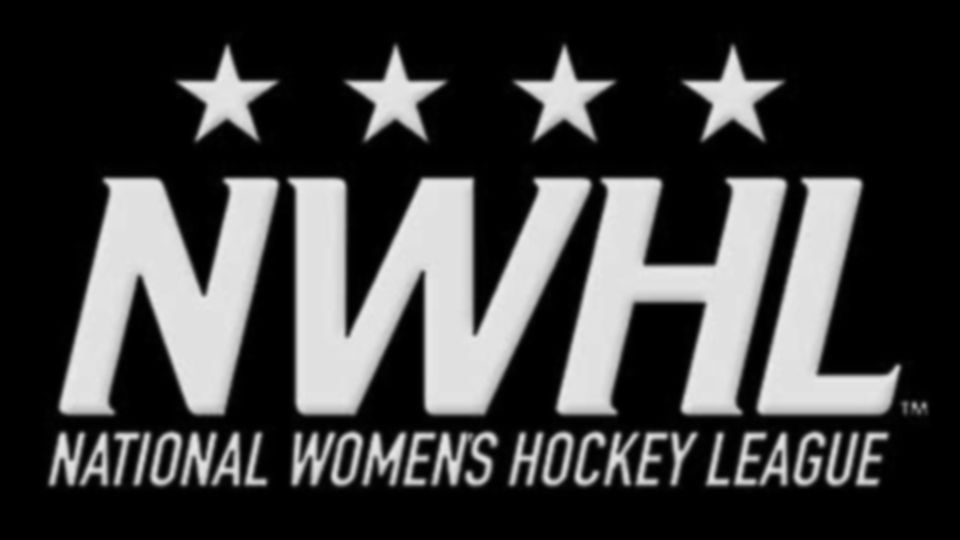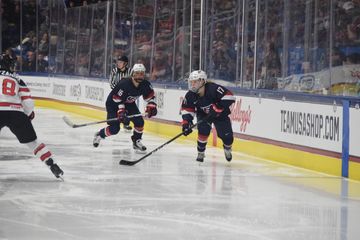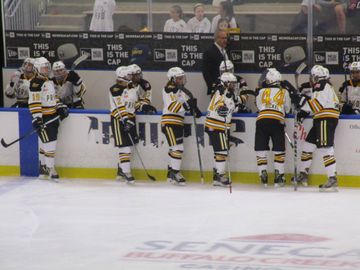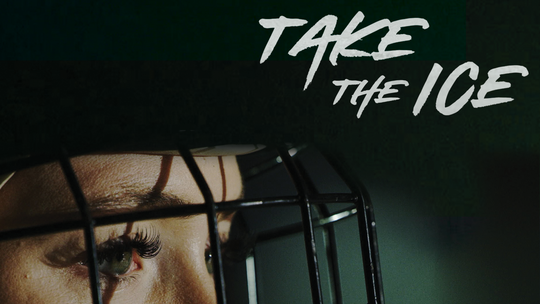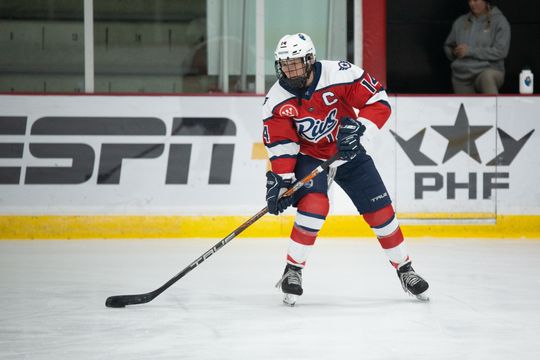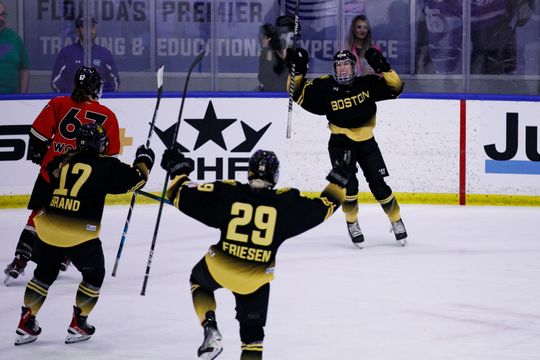Before reading this article, you should be familiar with terms/concepts such as afab/amab pertaining to assigned gender at birth and nonbinary gender. You may also want to look at nonbinary.org's list of nonbinary identities.
When Buffalo Beauts forward Harrison Browne publicly came out as a trans man this fall, the National Women's Hockey League announced that it would begin planning its transgender inclusion policy. On December 24, the policy was released to wide acclaim in the sporting world, receiving praise from Excelle Sports, Yahoo! Sports, and You Can Play.
The policy certainly merits some of the praise that it's receiving, as the majority of pro leagues don't have transgender inclusion policies of any kind. Most pro leagues have never even considered transgender inclusion policies. Even the WNBA, a longstanding leader in professional women's sport and a proud supporter of queer athletes, doesn't have a written policy of transgender inclusion. In this sense, the NWHL is a trailblazer.
In addition, the NWHL policy goes further than either the NCAA's or the IOC's recently revamped transgender inclusion policies by acknowledging that gender is not binary and that such policies should be inclusive of nonbinary athletes. The policy states that "the NWHL supports athletes choosing to express their gender beyond the binary of female and male." This attitude towards gender is rarely heard of in sports and is a strong statement of support for trans, nonbinary, and gender-nonconforming athletes.
It’s also important that the NWHL looked for assistance outside of its organization when crafting this policy. Sports advocacy groups and LGBTQ advocacy groups have already conducted a lot of research on and have experience with the restrictions and expectations that are placed on LGBTQ athletes, and the NWHL is still a very new league. The policy outlines the ways that current NWHL players can change their names and pronouns with the league, and it also stresses the need for confidentiality. These are all good things.
However, I find that this policy fails in the same way that all transgender inclusion policies in sports have failed. In its preoccupation with the hormones of trans people, the NWHL policy is in line with the NCAA and IOC. This actively harms many trans people and undermines its stated pledge to be inclusive of gender identity and expression that exists outside of the binary.
For sporting bodies like the IOC and NCAA and leagues like the NWHL, the concern over which hormones trans people are or are not taking boils down to issues of "fairness." There is a persistent belief that transgender athletes have an unfair advantage when compared with their cis counterparts. This belief is most commonly leveled at trans women and femmes who wish to participate in women's sports. Those who object to the participation of trans women will say their reasons for this are not transphobic and that they are merely looking to secure spaces for women to play fairly.
Of course, this is bullshit. There is no scientific proof that trans people have an advantage over cis competitors. If those who objected truly cared about women’s access to sports, they would surely advocate for the inclusion of trans women and femmes -- but they’re not doing that, because the word "women" in these conversations is always understood to mean cis women.
Trans men and trans masculine folks are not invoked as frequently in these arguments because it is assumed that afab people would not be able to compete with cis men. But because of players like Harrison Browne, the NWHL has considered the impact of hormone therapy on trans men who play and has deemed it to provide an unfair advantage. Treating trans athletes who are undergoing hormone therapy the same as you would treat athletes caught using performance-enhancing drugs is misguided and harmful. For starters, there simply haven't been long-term scientific studies that observe the impact of prolonged testosterone usage in afab nonbinary and trans people. There is simply no information available that definitively declares what hormone therapy does and does not do to afab bodies.
Sweeping, unfounded declarations about hormone therapy perpetuate the belief that trans athletes transition to gain competitive advantages, and negates the numerous reasons why a trans man might choose hormone therapy as part of transition. It implies that trans people are deceitful -- a belief that many cis people already hold about trans people's gender identities. Ultimately, it denies trans men and trans masculine folks the full range of choices available in transition.
If a trans man’s relationship to T is treated like this in the NWHL, it will subsequently impact trans women and femmes, as well as intersex people. Testosterone levels are frequently invoked as the final arbiter of who (and what bodies) can participate in women's sports. This past summer, we saw the length to which many in the media went to attempt to discredit athletes at the Rio Olympics with intersex traits, such as Caster Semenya and Dutee Chand. Semenya and Chand have testosterone levels higher than those that are typically found in cis women. While these levels are naturally occurring, these athletes are still stigmatized and attacked. Meanwhile, bodies like Semenya's and Chand's are unfairly scrutinized and referred to as masculine, despite the fact that they, too, are afab women.
The NWHL's policy states that the league "recognizes all forms of gender expression," yet still places limits on that expression that directly impact intersex, nonbinary, and trans athletes. The policy's effect will be to reinforce binary, cis understandings and definitions of gender while ostensibly being inclusive.
It is important to understand that intersex, nonbinary, and trans athletes are not trying to gain an competitive advantage by playing with cis women. They are simply trying to play a sport in a league that corresponds with their gender, in leagues that they have developed in, and in leagues that recognize who they are.
With this policy, the NWHL has placed limits on intersex, nonbinary, and trans participation. These regulations state that testosterone levels must be maintained within a "typical range" for women athletes. Unfortunately for intersex athletes, this replicates the same problems that athletes like Caster Semenya face when dealing with the International Association of Athletics Federations (IAAF), which is still challenging the right of women athletes with higher levels of naturally occurring testosterone from competing in women’s events.
In addition, this aspect of the policy forces trans women and femmes to undergo hormone therapy to participate in the league. While many trans people wish to undergo hormone therapy as part of their transition, not everyone is able to do this or wishes to do so. If the league does, in fact, recognize "all forms of gender expression," then surely trans women and femmes are best suited to make these decisions for themselves, instead of being excluded from participation on the basis of how they choose to transition.
The policy makes the participation of trans women and femmes less likely. The policy states: "The athlete's total testosterone level in serum must remain in the typical range of women athletes throughout the period of desired eligibility to compete in the female category." While such consistency might seem to be a reasonable consideration, it does not reflect the lived experiences of many trans people. Even with health insurance, the cost of hormone therapy may be prohibitive. In addition, there are occasional shortages of testosterone and estrogen, which leaves some trans people without a reliable supply. "Non-compliance" will result in a year-long suspension, even though this compliance may be completely unintentional and out of the athlete's control.
Despite this policy's attempts to include nonbinary athletes, its stipulations prohibit the participation of amab nonbinary athletes. The Eligibility Guidelines make clear that all afab players may compete in the NWHL as long as they are not taking T; however, amab players can only participate if they transition from male to female and declare that their "gender identity is female." While some amab nonbinary folks may desire hormonal transition and might be able to work within the restrictions of these guidelines as a result, many won't. A gender policy is not inclusive of nonbinary people if it actively excludes amab folks.
The greatest cause for concern in this policy is under the "Process" heading, where the rules state that the league retains the right to determine the validity of an athlete’s gender:
An athlete may initiate the process by contacting the NWHL prior to try-outs outlining their wish to participate in accordance to the NWHL's Transgender Athlete policy. The NWHL may, with a credible basis for believing that the athlete is asserting a transgender identity for an improper purpose, ask for additional information before moving forward with registration. Upon review of information and if it is deemed sufficient, the athlete will immediately be eligible to try out or compete if offered a position, and will continue to do so unless circumstances dictate that another gender declaration should be made.
Cis people might see this as a common-sense precaution. For some, it might make sense because the league needs to ensure competition is fair in the NWHL, including being fair to cis women. Unfortunately, the premise for such a statement is extremely transphobic.
There is simply no basis for the fear that trans people will participate in women's sports as some sort of elaborate ruse. Cis women are not marginalized and vulnerable in women's sports, but intersex, nonbinary, and trans athletes are. The discretionary powers outlined above illustrate an inherent distrust of trans folks, and especially of trans women. A trans woman who has already medically transitioned should not have to out herself to league officials to play professional hockey, but this policy seems to mandate such disclosures.
Trans athletes who are coming out with the purpose of playing in the league need a clearer picture of what kind of support, representation, and ability to appeal league decisions on whether their gender identity has been deemed "improper." But as it's written, the policy lacks these kind of specific details that would help trans players decide whether they should attempt to play in the league. This vagueness is probably deliberate, to make it open to the league's discretion to decide what constitutes "asserting a transgender identity for an improper purpose." The policy does not make clear who will advocate for the athlete in question, should such an accusation arise.
Who determines what would be a "credible basis" for suspecting that someone is faking their trans identity to participate in the clearly lucrative world of women’s professional hockey? I suspect the process will resemble what has happened to intersex athletes on the world stage. That is, someone within the sporting organization (such as a general manager, coach, trainer, staff member, or fellow athlete) will suspect that a player is lying about their gender and shares their concerns, which will trigger an investigation into the athlete in question. Undoubtedly, the burden of proof would fall disproportionately on the player. Trans women would likely be targeted with greater frequency, especially trans women of color.
Such investigations seem prejudiced against athletes who do not transition early in life. There are many reasons why an athlete would wait until early adulthood to come out and transition, such as financial restrictions, concerns about family and safety, legal issues, and health reasons. Passing a "gender test" that is administered by cis people would prove difficult for these trans and nonbinary athletes. Again, such an investigation and judgement would disproportionately impact trans women and femmes. Trans women and femmes, especially those who did not transition as teens or in college, would be trying to enter the league from outside women’s hockey developmental systems. It’s likely that afab nb and trans hockey players have developed playing girls hockey and women's hockey in college. They are more likely to have allies among their fellow players.
Ultimately, this policy is restrictive because it isn't so much inclusive of nonbinary and trans athletes as it is willing to allow trans athletes who conform to binary definitions of gender. This makes the NWHL policy fully consistent with NCAA and IOC guidelines. Such consistency makes sense, as the NCAA governs the college teams that train the players who graduate to the NWHL, the best of which represent their countries at the Olympics. Because of this intertwined relationship, it would be divisive and radical if the NWHL pushed to have a truly inclusive gender policy that reflected the needs and infinite diversity of intersex, nonbinary, and trans athletes.
However, such radical thought and action is precisely what is needed to create opportunities for all to play.
